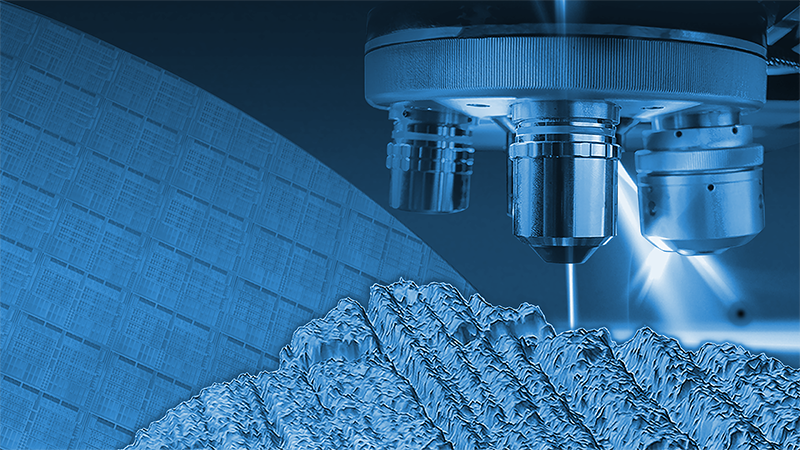AcuityXR
White light interferometry is firmly established as being among the fastest, most accurate, and most versatile surface measurement techniques available to researchers and manufacturers. One drawback of interferometry, however, is limited lateral resolution compared to atomic force microscopy or scanning electron microscopy systems. Bruker has developed a revolutionary interferometric measurement technology that effectively overcomes this optical diffraction limit without compromising the other benefits of white light interferometry.
AcuityXR® combines unique, patent-pending Bruker hardware and software technology to enable select Contour 3D optical surface profilers to break the optical diffraction limit and deliver lateral resolutions previously considered unattainable with conventional optical microscopy techniques. It works on smooth surfaces where the phase of the reflected light is used to calculate surface height from the white-light-interferometric signal, improving sharpness, clarity, and definition of scratches, defects, and surface texture. Additionally, dimensional repeatability on nanoscale structures is improved by a factor of 5X.
Through the combination of system modeling, low-noise measurements, and multiple surface scans, AcuityXR reduces the blur caused by the optical elements significantly enhancing lateral resolution. For narrow features, it also offers significantly enhanced quantification of width variations, making process control possible even on small structures. This is a valuable capability for grating manufacturing process monitoring, MEMS sensor critical dimension measurement and other process development or quality control uses. Based on the patent-pending technology, AcuityXR produces measurements with twice the sampling in the X and Y directions compared to standard interferometric measurements, greatly enhancing the capability of optical profilometry performed with Bruker 3D microscopes in a range of applications.
